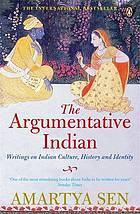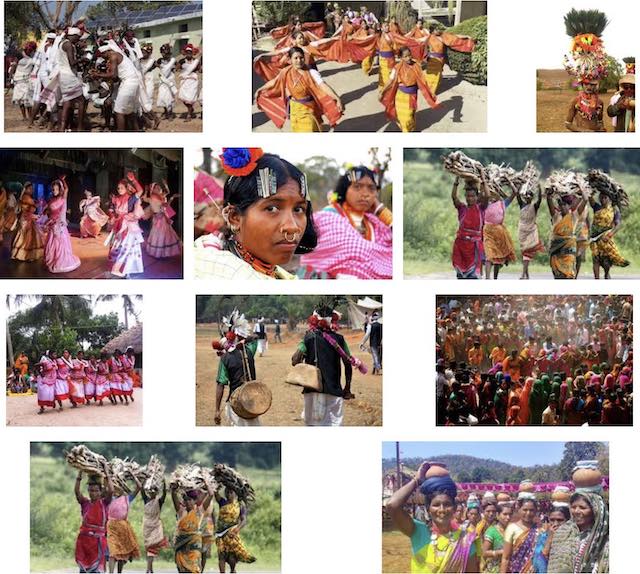Mrs Uma Ram, Professor & Head Department of English Government Kakatiya PG College, Jagdalpur, Bastar, Chhattisgarh
Bastar, a part of Dandakaranya inancient time, is both a district as also a division in Chhattisgarh. Till 1997, it was a single district division in Madhya Pradesh. Bastar today is a division with five districts namely Bastar, Kanker, Dantewada, Narayanpur and Bijapur Tribal population This is a heavily forested, tribal-dominated area. The entire division is a notified scheduled area. A brief demographic glimpse of the area can be had from the following table […]
Language is a major issue. The tribal child in Bastar has to simultaneously contend with at least three languages: (a) his mother tongue that could be Gondi or Bhatri or Dorli or Dhurvi or Telga or Halbi (b) Halbi, which is the lingua franca in Bastar and (c) Hindi, the official medium of instruction. Add to this English, which is taught from Standard I. With plans being afoot to get Chhattisgarhi included in 8th Schedule of the Constitution as the official language of the State,7 it is only a matter of time before the child will be saddled with yet another language. None of the local tongues in Bastar has a script of its own. The medium of instruction in schools is Hindi. The Text Books are in Hindi and in Devanagari script. In effect, for the tribal child in Bastar to be instructed in Hindi, it is analogous to a British school-boy in England being taught in French medium! To say the least, the child’s mind is baffled, and this state is commonly misjudged as low IQ among tribal students.
The matter is made worse by the prejudice against tribal ways ingrained in the teacher’s mind. Most of the teachers are non-tribals. They have their homes in the towns and, given the state of transport system, their commuting between home and school is erratic and takes away much of their time and energy. The Government tried in vain to adopt a system of local employment, but this ran into a legal hurdle. The worst among the teachers simply play truant. The best among the teachers approach their job in a misconceived missionary mode. They believe their mission is to “civilize” the tribal kids and to “wean them from traditional ways” to assimilate them into the “national mainstream”. The Government believes in no less, without realizing the terrible ramifications implied in this mission. […]
Issues In Tribal Education
The woes that ail tribal education in Bastar are largely those that ail tribal education in other parts of India (maybe the world). The entire process of education in tribal areas inadvertently (or advertently?) aims to supplant the traditional value-system with another system that is almost the opposite of it! This happens in various ways.
The schools remain a disabling force.
The traditional ‘school’ of the tribal in Bastar was in the ghotul [learning centre]. The best of what is in tribal culture owes to the ghotul. However, under the influence of the new education, the ghotul has suffered a systematic disintegration. Today, it is almost defunct (except perhaps in some remote interiors of Bastar where too it is reported to be very irregular).
To conclude, based on the Bastar experience, some suggestions could be made at this point to make tribal education meaningful, creative and livelihood-friendly. These are as follows:
• The Big-brother attitude of educators must end. The approach to tribal education has to be a two-way transaction of give and take, based on an informed appreciation of traditional tribal values and wisdom.
• The purpose of tribal education must be (like elsewhere) to (a) impart the ‘3R’s and (b) to refine and lead further the legacy of traditional wisdom (c) to facilitate strengthening of the traditional economic activities.
• Ways and means could be explored to involve ghotul-kind of institutions to integrate traditional and new forms of education.
• The content for schools in tribal areas must be different (at least partially) from the general content.
• The panel that has power to design tribal education must include professional anthropologists and also traditional community leaders.
• The school terms and daily timings must be according to the tribal economic calendar.
References:
i For a fuller discussion of this point, see Reading Beyond the Alphabet, Ed. Brij Kothari, Vijay Sherry Chand and Michael Norton (2003) Sage Publications. This book is a collection of papers presented at a Workshop on Lifelong Literacy organized by IIM, Ahmedabad in August 1999. The point here is picked from the opening article by K.S.Ram in this book.
ii Vide The Tamarind Route to Gram Swaraj, RG Mission, Jagdalpur (2000)
iii Vide Imli Andolan In Bastar, RG Mission, Jagdalpur (1999). This figure based on the Mandi’s official records relates to 1999. At current prices, this is well over Rs.2000 Cr.
iv In terms of the Provisions of Panchayat (Extension to Scheduled Areas) Act, 1996, gram sabhas in tribal areas have ownership rights over locally available NTFP.
v Vide Imli Andolan In Bastar, RG Mission, Jagdalpur (1999).
vi See The Muria And Their Ghotul by Verrier Elwin (OUP)
Source: “Issues in Tribal Education in Bastar, Chhattisgarh”, Folklore Foundation, Lokaratna, Volume IV 2011
http://indianfolklore.org/journals
Date Visited: Tue May 27 2014 17:05:20 GMT+0200 (CEST)
[Bold typeface added above for emphasis]
Tribal communities in the central Indian region of Bastar:
Baiga | Bhatra | Dhruva | Gond | Halba | Madia | Maria | Muria

“The smart boy or clever girl who is deprived of the opportunity of schooling, or who goes to a school with dismal facilities (not to mention the high incidence of absentee teachers), not only loses the opportunities he or she could have had, but also adds to the massive waste of talent that is a characteristic of the life of our country.” – Nobel Awardee Amartya Sen in The Argumentative Indian (Penguin Books, 2005), p. 344
Tips: Tribal Children’s Right to Education | Find this and other books published in India | Video documentary on the Lifeworld of an Enlightened Villager | Related posts about Childhood | Childrens rights: UNICEF India | Safe search >>
Up-to-date reports by Indian experts and journalists
Search tips
Combine the name of any particular state, language or region with that of any tribal (Adivasi) community.
Add keywords of special interest (music, poetry, dance just as health, sacred grove and biodiversity); learn about the rights of Scheduled Tribes such as the “Forest Rights Act” (FRA); and the United Nations “Declaration on the Rights of Indigenous Peoples”, “Universal Declaration of Human Rights”, “women’s rights”, or “children’s right to education”.
Ask a question that includes “tribal” or “Adivasi”, for instance: “Adivasi way of life better?” (or “tribal way of life worse?”)
Specify any particular issue or news item (biodiversity, bonded labour and human trafficking, climate change, ecology, economic development, ethnobotany, ethnomedicine, global warming, hunter-gatherers in a particular region or state, prevention of rural poverty, water access).
For official figures include “scheduled tribe ST” along with a union state or region: e.g. “Chhattisgarh ST community”, “Himalayan tribe”, “Scheduled tribe Tamil Nadu census”, “ST Kerala census”, “Particularly Vulnerable Tribal Group Jharkhand”, “PVTG Rajasthan”, “Adivasi ST Kerala”, “Adibasi ST West Bengal” etc.
In case the Google Custom Search window is not displayed here try the following: (1) toggle between “Reader” and regular viewing; (2) in your browser’s Security settings select “Enable JavaScript” | More tips >>
Note: hyperlinks and quotes are meant for fact-checking and information purposes only | Disclaimer >>
List of websites covered by this Google custom search engine
Academia.edu (platform for academics to share research papers) – www.academia.edu
Archive.org – https://archive.org
Centre for Science and Environment – https://www.cseindia.org
Current Conservation – https://www.currentconservation.org
Development and Cooperation (D+C) https://www.dandc.eu
Down To Earth (India) – www.downtoearth.org.in
India Environment Portal – www.indiaenvironmentportal.org.in
Harnessing Nature Magazine – https://harnessingnature.online
Mongabay-India – https://india.mongabay.com
M S Swaminathan Research Foundation – www.mssrf.org
Navdanya (protecting India’s biodiversity based food heritage) – https://navdanya.org
Third World Network (Penang, Malaysia) – https://twn.my
The Shola Trust (nature conservation in the Nilgiri region) – www.thesholatrust.org

Indian online periodicals and platforms | Images view >>
~ ~ ~
Personalize your CustomSearch by combining other search words >>
(e.g. name of a tribal community and region, a craft, or dance and puppetry)
Research the above issues with the help of Shodhganga: A reservoir of theses from universities all over India, made available under Open Access >>
Note: hyperlinks and quotes are meant for fact-checking and information purposes only | Disclaimer >>
See also
Forest Rights Act (FRA) | Legal rights over forest land
Health and nutrition | Recommendations by the Expert Committee
People’s Archive of Rural India (PARI) | RuralIndiaOnline.org
States along the Narmada river’s course (source to Arabian Sea):
Madhya Pradesh | Maharashtra | Gujarat